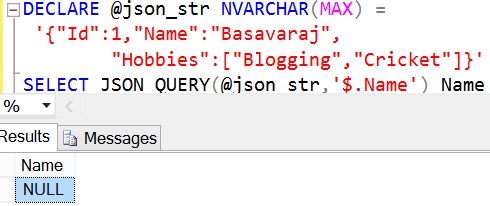

In the past, data analysts and engineers had to revert to a specialized document store like MongoDB for JSON processing.

One of the unusual features of the PostgreSQL database is the ability to store and process JSON documents. Querying JSON (JSONB) data types in PostgreSQL.Using AWS Athena to understand your AWS billsĬanada Province & Census Division Shapefiles Modeling: Denormalized Dimension Tables with Materialized Views for Business Users Gap analysis to find missing values in a sequenceĮstimating Demand Curves and Profit-Maximizing Pricing Querying JSON (JSONB) data types in PostgreSQL Using SQL to analyze Bitcoin, Ethereum & Cryptocurrency Performance Multichannel Marketing Attribution ModelingĪnalyzing Net Promoter Score (NPS) surveys in SQL to improve customer satisfaction & loyalty SQL's NULL values: comparing, sorting, converting and joining with real values SQL Server: Date truncation for custom time periods like year, quarter, month, etc.įilling Missing Data & Plugging Gaps by Generating a Continuous Seriesįinding Patterns & Matching Substrings using Regular ExpressionsĬoncatenating Rows of String Values for Aggregation


#Json query tutorial series#
Redshift: Generate a sequential range of numbers for time series analysis MySQL: Generate a sequential range of numbers for time series analysis Understanding how Joins work – examples with Javascript implementation It also provides links to external data and services, including relational databases and machine learning data.First steps with Silota dashboarding and chartingĬalculating Exponential Moving Average with Recursive CTEsĬalculating Difference from Beginning RowĬreating Pareto Charts to visualize the 80/20 principleĬalculating Summaries with Histogram Frequency DistributionsĬalculating Relationships with Correlation MatricesĪnalyzing Recency, Frequency and Monetary value to index your best customersĪnalyze Mailchimp Data by Segmenting and Lead scoring your email listĬalculating Top N items and Aggregating (sum) the remainder into "All other"Ĭalculating Linear Regression Coefficientsįorecasting in presence of Seasonal effects using the Ratio to Moving Average method Working together with a workflow orchestrator, JAQL is used in BigInsights to exchange data between storage, processing and analytics jobs. The company offers the query language as part of the tools suite associated with InfoSphere BigInsights, its Hadoop platform. While it continues to be hosted as a project on Google Code, where a downloadable version is available under an Apache 2.0 license, the major development activity around JAQL has remained centered at IBM. JAQL was created by workers at IBM Research Labs in 2008 and released to open source. It automatically generates MapReduce jobs and parallel queries on Hadoop systems. JAQL can run in local mode on individual systems and in cluster mode, in the latter case supporting Hadoop applications. JSON has found wide use in Web and mobile applications, including large-scale big data and enterprise data warehouse applications. A " SQL within JAQL" capability lets programmers work with structured SQL data while employing a JSON data model that's less restrictive than its Structured Query Language counterparts. For example, it can support XML, comma-separated values (CSV) data and flat files. As its name implies, a primary use of JAQL is to handle data stored as JSON documents, but JAQL can work on various types of data. Pronounced "jackal," JAQL is a functional, declarative programming language designed especially for working with large volumes of structured, semi-structured and unstructured data. JAQL is a query language for the JavaScript Object Notation ( JSON) data interchange format.


 0 kommentar(er)
0 kommentar(er)
